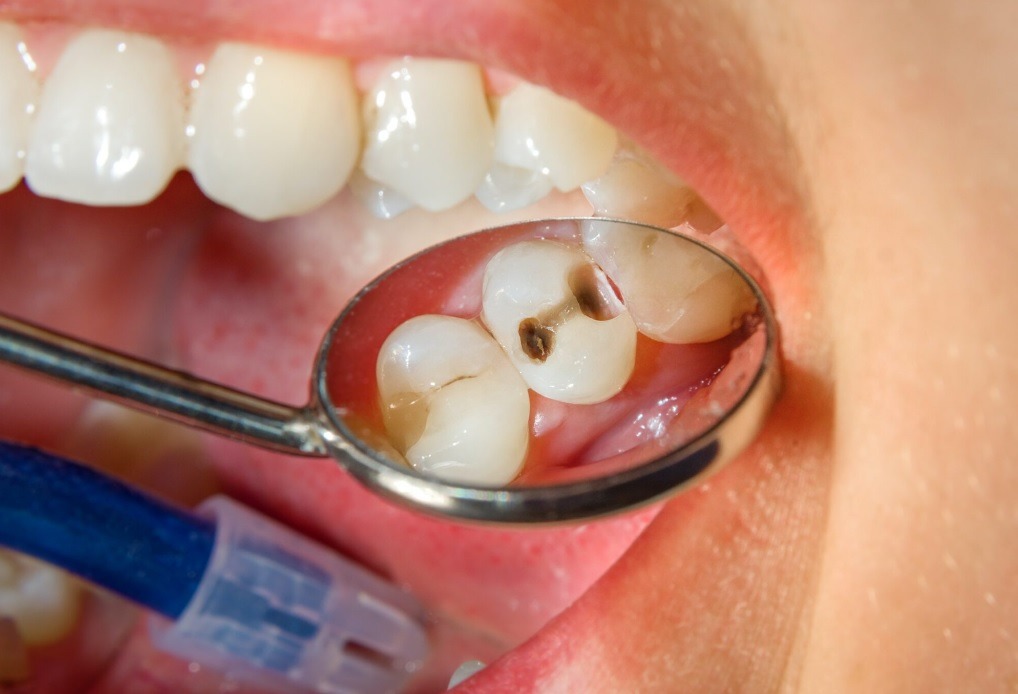What is Tooth Decay?

The activity of the bacteria that live in dental plaque is the main culprit to tooth decay, the plaque converts the sugars and foods in our diet into acids. If the plaque is left on your teeth for a prolonged period of time, these acids will slowly begin to cause damage.
What is plaque? Dental plaque is a sticky, colourless to yellow biofilm made of bacteria that forms on the surface of the mouth. This biofilm provides a suitable site for continued growth of bacteria.
What are the Stages of Tooth Decay?
1. Demineralization
The outer layer of the tooth is called enamel and is the hardest substance in the human body, it is made of minerals that is organised in a crystalline structure.
As the surface of the tooth is attacked by acid from the dental plaque, the enamel will begin to lose minerals from the surface. The loss of minerals from the enamel layer will cause a white spot to appear.
2. Enamel Decay
Over time this loss of minerals from the tooth surface will lead to the surface of the tooth to become weakened to a point where the enamel surface will break forming a physical cavity.
3. Dentine Decay
Dentine is the second layer of the tooth and lies below the enamel. Dentine is softer than enamel, and contains microscopic tubes that lead straight to the nerve of the tooth. It is not uncommon to have some sensitivity when the cavity has reached the second layer of the tooth.
4. Pulp / Nerve
The pulp contains the nerves and blood supply to the tooth. When tooth decay occurs, the nerve can become irritated and begin to swell, leading to tooth pain as a result as bacteria reaching the nerve of the tooth.
Advanced tooth decay in a tooth, can lead to the tooth pulp to die off eventually leading to a dead tooth.
Treatment of Tooth Decay
The treatment for tooth decay will depend on various factors for example tooth prognosis, the stage of tooth decay. It is advised to discuss your treatment options with your Canberra dentist.
Treatment of Demineralisation
The early stages of tooth decay, where the tooth is demineralised and no physical cavity is formed can be reversed. Demineralised enamel can be remineralised before more damage is done, by treatment with fluoride.
You can receive fluoride treatment from your dentist Canberra, or in the form of toothpaste and mouth rinses. The fluoride will help restrengthen the enamel crystals and make it more resistant to acid attack.
- Physical Cavity
A physical break in the tooth’s surface will require restorative dental treatment. This can range from a composite resin, GIC or ceramic restoration.
- Pulp Damage
If the dental decay is has progressed to the point where the nerve of the tooth has become inflamed or unfortunately has necrosed, then most often the tooth may require root canal therapy. Where the infected and damaged nerve is removed, cleaned and refilled.


